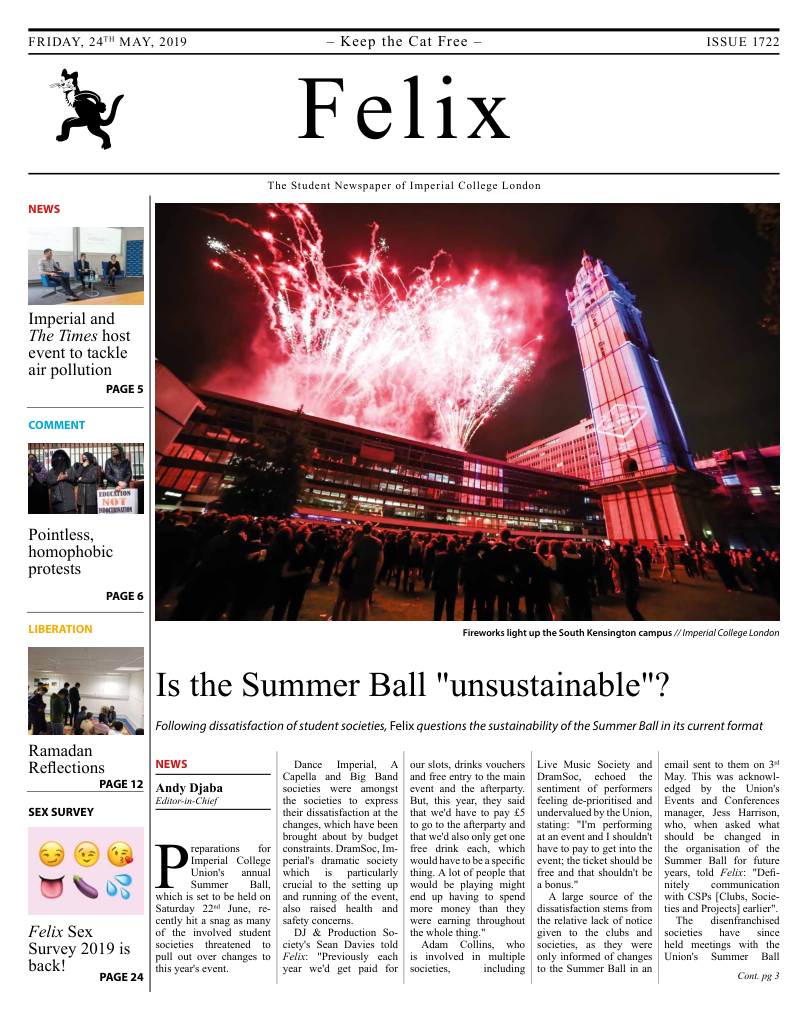AI: More than Worth It
The Barbican’s new exhibition, AI: More than Human, is a colourful sandbox of AI-related treats with plenty of surprises and none of them unwelcome.

It has almost been seventy years since Alan Turing published the hugely influential paper ‘Computing Machinery and Intelligence’ where he first posits the basis of what we now know as the Turing test. In a mere lifetime, computers have gone from purely machines of calculation to pocket-sized marvels capable of mirroring sentience to an uncanny degree of success. Barbican’s new exhibition, AI: More than Human, hopes to tell the story of humanity and computer’s shared evolution, setting its bar high as an “unprecedented survey of creative and scientific developments in artificial intelligence”. It’s an ambitious pitch given the collective obsession with this subject – it seems that you can’t go more than two weeks without a new AI-centric event popping up at a museum, art gallery, or even the theatre (usually proclaiming in a rather temporally-challenged fashion that “the future is here”). Fortunately, given the Barbican’s past successes and its record of great exhibitions, I was excited to see if the new exhibition would prove to be not just “more than human” but ‘more than cliché’.
The moment I stepped into the exhibition gallery, I realised I was right to be excited. What AI: More than Human gets right more than any other exhibition I recall going to is the sense of scope. The emphasis is not bound by modern interpretations of computers or artificial intelligence but rather our attempts at creating a thinking being. With that angle, the exhibition opens by exploring our curious history with golems and other creatures brought to life. Kode9’s newly commissioned sound installation spits out snippets and samples of stories about artificial entities in an eerie fashion. In fact, the whole first section, The Dream of AI, has a slightly chilling buzz about it. Sound permeates the gallery, accentuating the often-grotesque depictions of artificial life forms imagined in film and projected as a supercut of sci-fi horrors. Even Doraemon makes a guest appearance in the exhibition, reminding us that the dream of AI is not just in the past and that we have a long way to go before realising said dreams. I was slightly disappointed they went with clips from the more recent 3D-rendered Stand by Me Doraemon but it suits its purpose in linking past, present, and future just fine.
The second section, Mind Machines, is a slightly more conventional exploration of modern computing with an interactive timeline as its backbone. However, even in the relatively straightforward set-up, there was great care taken to show the new and shed light on the lesser-known. Gone is the gentlemen’s club narrative of computing history, replaced by a markedly more diverse cast of characters. Even chess, the Western thinking-man’s game oddly prominent in computer lore, was deemphasised in favour of go, chess’s wild Chinese cousin. Another highlight in this section includes Google PAIR’s project, Waterfall of Meaning, where you can submit words to trickle down the screen, veering left and right depending on its association with binary concepts such as good/bad and male/female. Anna Ridler’s tulip-centred pieces take another approach, combining history, economics, computing, and even politics (see overleaf). Both these projects remind us of how much influence humans still have over AI and how far away we are from creating an independently thinking machine.
Data Worlds, the third section, is perhaps the most interactive of them all. Visitors are encouraged to build the perfect cities out of LEGO, have a spin on a driving simulator which tracks driver emotions as they encounter different situations (my drive consisted almost entirely of horror as I laid waste to a rural English village), or record snippets of sound for AI to render as music. Among these pieces designed to inspire a giddying, childish glee, are more serious works exploring ethical issues such as bias, confidentiality, and truth.
The final section is titled Endless Evolution, hypothesising not only the next chapter of our own species but the possibility of the creation of new species. True to its premise, this is also where we see the most experimental work. Massive Attack mark the 20th anniversary of their album Mezzanine by encoding the album as strands of DNA stored in a spraypaint can. Although the artist boasts each spray to contain around one million copies of Mezzanine- encoded ink, I’m still not sure a) how the album was encoded into base pairs and b) why anyone would want to tag a wall with album DNA. Here we also see Alter 3, the next generation of androids (to be explored further in a future issue). Unfortunately, with its bare, robotic body and genderless, ageless face, I could only see the cast of the next generation of uncanny valley horror movies. Not only do synthetic humans feature but also synthetic insects, such as Yoichi Ochiai’s artificial butterfly and The Synthetic Apiary, a possible solution for the honeybee population problem.
There’s very little to fault about AI: More than Human. It’s a rare instance where there really is something for every demographic regardless of age, gender, race, and understanding of computer sciences. It’s a masterclass in retelling a worn-out story and giving a fresh perspective on something that is already so familiar to us. What’s more, I didn’t once see the buzzword ‘big data’ thrown around callously as the question and answer to everything, and that is perhaps the greatest triumph of all.
- 5 stars








